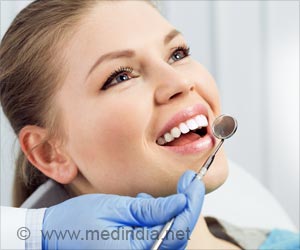Accelerated orthodontics is gaining popularity as a way for patients to speed up the time it takes to straighten misaligned bites and fix crowded teeth.
Researchers at the University of Southern California School of Dentistry say they have improved upon a surgical procedure developed by periodontist Tom Wilcko that rapidly straightens teeth, delivering a healthy bite and attractive smile in months instead of years.
Led by Hessam Nowzari DDS, PhD, Director of the USC School of Dentistry and Advanced Education in Periodontology program, the researchers have published the first case study of the successful use of a patient’s own bone material for thegrafting necessary in the accelerated orthodontic surgical procedure. The report appears in the May 2008 issue of the Compendium of Continuing Education in Dentistry.
Accelerated orthodontics is gaining popularity as a way for patients, particularly adults with mature bones, to speed up the time it takes to straighten misaligned bites and fix crowded teeth. Wilcko, who operates a practice in Erie, Penn., offers courses in the procedure, trademarked as “Wilckodontics.”
USC dentists used a procedure known as PAOO, short for Periodontally Accelerated Osteogenic Orthodontics. With this technique, a periodontist or oral surgeon uses special instruments to score the bone that holds the teeth in place and then applies bone graft material over the grooves. The procedure is done under local anesthetic in the dental office operatory.
As the bone begins to heal, it softens slightly, allowing teeth to be moved into alignment with dental braces in a matter of months, rather than the years required with traditional orthodontics. The cost for accelerated orthodontics typically ranges from $10,000 to $15,000, depending on the course of treatment.
Prior to the USC study, the bone graft material used for this procedure was bovine bone and bioactive glass particles to help the bone strengthen as it healed.
Nowzari says that his team believed they could improve the technique by using the patient’s own bone instead of the artificial or bovine graft.
Advertisement
Source-Newswise
LIN







